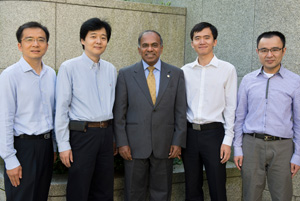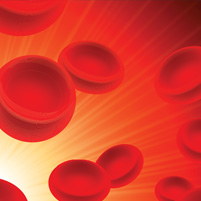Acoustic Tweezers

[l-r] Tony Huang, Ming Dao, Subra Suresh, Peng Li, Zhangli Peng

Carnegie Mellon University President Subra Suresh and researchers from MIT and Pennsylvania State University have devised a new way to separate cells by exposing them to sound waves as they flow through a tiny channel.
Their device could be used to detect the extremely rare tumor cells that circulate in cancer patients' blood, helping doctors predict whether a tumor is going to spread.
"The method we describe in this paper is a step forward in the detection and isolation of circulating tumor cells in the body," Dr. Suresh said. "It has the potential to offer a safe and effective new tool for cancer researchers, clinicians and patients."
The research is published online in the Proceedings of the National Academy of Sciences (PNAS).
The paper describes a process that could dramatically alter the way scientists on the leading edge of cell research, disease diagnostics and therapeutics conduct their work. The technology demonstrated can be used to separate rare circulating cancer cells from white blood cells. The researchers have filed for a patent on the device.
The method used by President Suresh and his co-authors shows unique promise. It causes the least disturbance and damage to the cells being separated of any process developed so far.
Their approach adopts a method that researchers sometimes call "acoustic tweezers."
"Acoustic pressure is very mild and much smaller in terms of forces and disturbance to the cell," said Ming Dao, a principal research scientist in MIT's Department of Materials Science and Engineering and one of the senior authors of the paper.
Dao said this is a gentler method to existing cell-sorting technologies, which require tagging the cells using chemicals or exposing them to damaging mechanical forces.
The team was able to accurately separate cells when the difference between cell diameters was smaller than two micrometers.
Dao said that the next steps are to test the device using patient samples and improve the throughput to shorten the process time.
"When blood is out of the body too long, the properties change," Dao said.
Tony Jun Huang, a professor of engineering science and mechanics at Penn State, is also a senior author of the paper. Lead authors are MIT postdoc Xiaoyun Ding and Zhangli Peng, a former MIT postdoc who is now an assistant professor at the University of Notre Dame.
Related Links: MIT News: Sorting Cells With Sound Waves | Meet the President: Dr. Subra Suresh
